Where to buy now
We tell you exactly which neighbourhoods are set to skyrocket in value.
Advertisement
We tell you exactly which neighbourhoods are set to skyrocket in value.

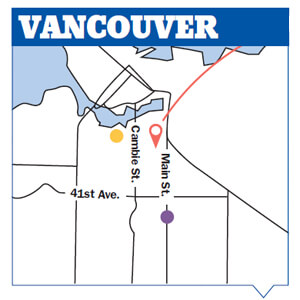 We all know how expensive real estate is in Greater Vancouver. But does it mean buying a home there is a bad investment? Not necessarily. At present, Vancouver’s unemployment, at 4.5%, is significantly better than the national average of 7%. While prices in the city have dipped, there are still neighbourhoods that are headed up.
Communities in New Westminster, Burnaby and Coquitlam all showed excellent long-term value, but the five neighbourhoods we feel will gain the most in the next few years are all inside the City of Vancouver. Best bets are Mount Pleasant (West and East), Fairview, Main and Fraser.
While the average price point for West Mount Pleasant (the area west of Ontario Street) was over $1.3 million, our realtors felt there was room for further increases. The west side of Mount Pleasant borders on Cambie Village and the SkyTrain’s Canada Line. It also has easy access to downtown, by transit, car or bike. “Those reasons alone make this area desirable,” says Patrick Weeks, a realtor with Re/Max Select Properties. But when you add in eclectic stores, heritage buildings and artistic residents, you have a recipe for further appreciation.
Kevin Poskitt, a 28-year-old operations director, agrees. Poskitt bought his 540-sq-ft loft in West Mount Pleasant two years ago, using realtor Gina Rossi, and loves his home’s exposed concrete design. “It’s both stylish and convenient,” he says. “My fiancée Kristen and I love it here.”
East Mount Pleasant, our number five neighbourhood, is also worth exploring. Houses just east of Ontario Street are typically 20% to 30% cheaper, with the average sale price in 2013 just over $800,000.
Those wanting to move closer to the beaches—but not pay Kitsilano or Point Grey prices—should check out Fairview. Located between Kitsilano and Mount Pleasant, Fairview’s average home price is 36% less than comparable homes directly to the west. This potential value and its proximity to downtown has meant an almost 6% appreciation in the last year alone. “This area is very walkable, which is a big attraction,” says Weeks. Many of the buildings are older, which gives people willing to work with fixer-uppers an opportunity to add a bit of sweat equity. “Anyone buying an older home would certainly see an upside in the next few years.”
Finally, consider Main—a residential area located a few blocks east and west of the popular Main Street strip. Like Mount Pleasant, homes on the east side sell for $300,000 to $400,000 less than their west-side counterparts, but both areas have great access to good schools, tons of independent shops and restaurants and Queen Elizabeth Park.
We all know how expensive real estate is in Greater Vancouver. But does it mean buying a home there is a bad investment? Not necessarily. At present, Vancouver’s unemployment, at 4.5%, is significantly better than the national average of 7%. While prices in the city have dipped, there are still neighbourhoods that are headed up.
Communities in New Westminster, Burnaby and Coquitlam all showed excellent long-term value, but the five neighbourhoods we feel will gain the most in the next few years are all inside the City of Vancouver. Best bets are Mount Pleasant (West and East), Fairview, Main and Fraser.
While the average price point for West Mount Pleasant (the area west of Ontario Street) was over $1.3 million, our realtors felt there was room for further increases. The west side of Mount Pleasant borders on Cambie Village and the SkyTrain’s Canada Line. It also has easy access to downtown, by transit, car or bike. “Those reasons alone make this area desirable,” says Patrick Weeks, a realtor with Re/Max Select Properties. But when you add in eclectic stores, heritage buildings and artistic residents, you have a recipe for further appreciation.
Kevin Poskitt, a 28-year-old operations director, agrees. Poskitt bought his 540-sq-ft loft in West Mount Pleasant two years ago, using realtor Gina Rossi, and loves his home’s exposed concrete design. “It’s both stylish and convenient,” he says. “My fiancée Kristen and I love it here.”
East Mount Pleasant, our number five neighbourhood, is also worth exploring. Houses just east of Ontario Street are typically 20% to 30% cheaper, with the average sale price in 2013 just over $800,000.
Those wanting to move closer to the beaches—but not pay Kitsilano or Point Grey prices—should check out Fairview. Located between Kitsilano and Mount Pleasant, Fairview’s average home price is 36% less than comparable homes directly to the west. This potential value and its proximity to downtown has meant an almost 6% appreciation in the last year alone. “This area is very walkable, which is a big attraction,” says Weeks. Many of the buildings are older, which gives people willing to work with fixer-uppers an opportunity to add a bit of sweat equity. “Anyone buying an older home would certainly see an upside in the next few years.”
Finally, consider Main—a residential area located a few blocks east and west of the popular Main Street strip. Like Mount Pleasant, homes on the east side sell for $300,000 to $400,000 less than their west-side counterparts, but both areas have great access to good schools, tons of independent shops and restaurants and Queen Elizabeth Park.
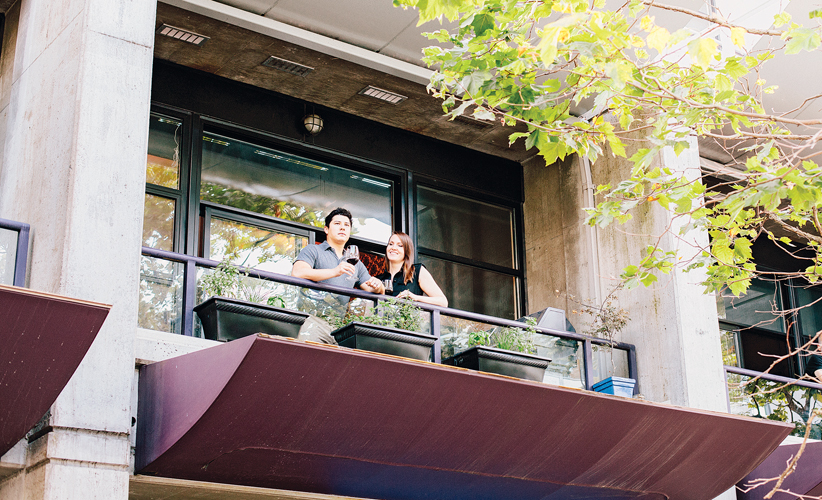
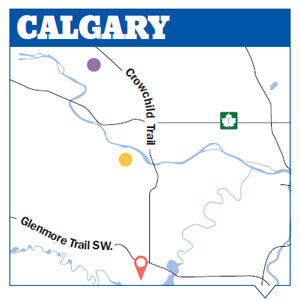
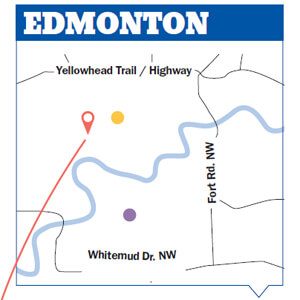
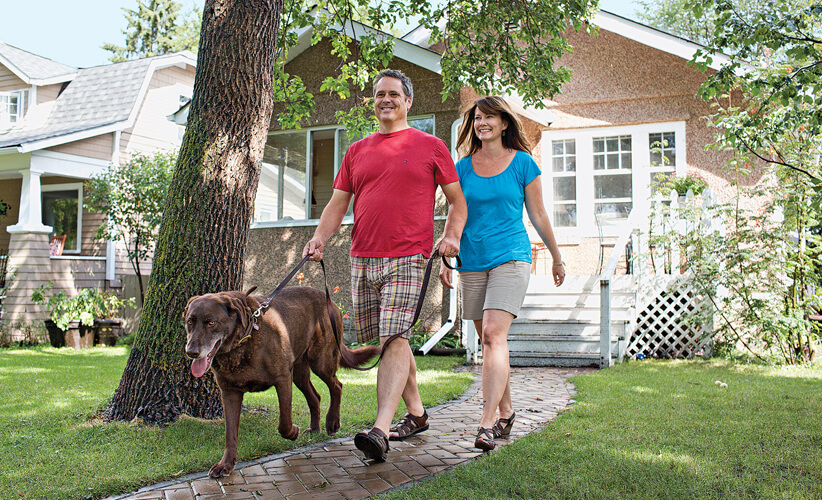
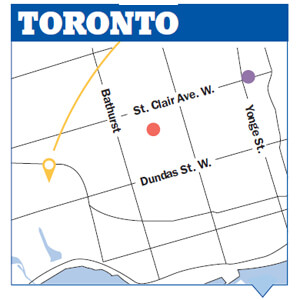 If you’re looking for a city with rock-bottom real estate prices, then keep driving. Despite endless chatter about an overheated market, Toronto housing prices have continued to climb, with some homes attracting multiple bids and selling for $100,000 or more over list price.
While our top two Toronto neighbourhoods—Wychwood and the Junction Area—are no strangers to bidding wars, we still feel these areas offer great opportunities for near-future appreciation. Why? Despite Wychwood homes selling for almost 63% more than the average-priced Toronto home, these properties are still 19% cheaper than homes in neighbouring areas. That’s because Wychwood is nestled next to two of Toronto’s more expensive urban communities, Casa Loma and the Annex. Close proximity to wealthy neighbourhoods, access to transit and the downtown core, excellent green space, and a newly built community space (known as Wychwood Barns) all make this an under-appreciated area. “There’s a lot of inexpensive housing in this area that people are only just starting to discover,” says Laurin Jeffrey, half of a husband-and-wife realtor team that works out of Century 21 Regal Realty. These days even a smaller, two-bedroom house will cause a bidding war before being sold for around $550,000. “But to live so close to downtown, the price tag is still cheap,” Jeffrey explains.
If the average price in Wychwood, at just under $827,500, is still a bit much, consider further west in the Junction Area. Average prices for homes here were a smidge over $534,500 as of mid-2013. Aleksandra Oleksak, a realtor with Sage Real Estate, believes Junction homes will continue to appreciate because of their proximity to High Park and Roncesvalles—two west-end Toronto neighbourhoods that have experienced dramatic appreciation over the last five years.
Emily Wilkinson, a 48-year-old entrepreneur, bet that the Junction would continue to rise last year when she bought a storefront property with an upstairs apartment, with the help of Realtor Katrina McHugh of Junction Realty Inc. “I’m going to live upstairs and am in the process of renovating the Caboose café downstairs,” Wilkinson says. “I see a lot of potential here.” Another draw is the local food scenesters who have made this area their home. “There are great parks and local markets and a fabulous organic health food store,” says Oleksak. “All this has made the area trendy.”
The Yonge-St. Clair neighbourhood—the third community on our list—is also seeing price momentum because of its proximity to wealthier neighbourhoods. Despite its steeper price tag—average homes cost just over $1.1 million—the area has realized a 30% price appreciation in the last year. “Buyers know this area is well-established and well-serviced by local restaurants, plus it has access to public transit, parks and amenities, but the price point to get in is much cheaper than Lawrence Park to the north and Rosedale to the south,” Oleksak says. The real value in this area is in new condos and older, under-renovated homes, explains Daniel Bloch, a Harvey Kalles realtor.
Two other neighbourhoods to consider are Englemount-Lawrence in the northwest, near the Allen expressway, and Moss Park, an area going through massive gentrification. Englemount-Lawrence is right beside the popular, and very expensive, Forest Hill neighbourhood. That means residents here can purchase a good-sized bungalow, on a fairly big lot, for as little as $600,000, as opposed to a Forest Hill semi for around $950,000. Based on our statistics, homes in the Englemount-Lawrence area were priced 40% lower than Forest Hill, on average, but with similar access to schools, shopping and transit.
For near-future appreciation Moss Park is the neighbourhood to buy. Every realtor we spoke to considered it an excellent area to invest, mainly because there’s been so much development, with more being planned. In the last year alone property values have appreciated by almost 12.5%, while the average price for homes in this area is still 27% less than the average-priced home in the City of Toronto.
If you’re looking for a city with rock-bottom real estate prices, then keep driving. Despite endless chatter about an overheated market, Toronto housing prices have continued to climb, with some homes attracting multiple bids and selling for $100,000 or more over list price.
While our top two Toronto neighbourhoods—Wychwood and the Junction Area—are no strangers to bidding wars, we still feel these areas offer great opportunities for near-future appreciation. Why? Despite Wychwood homes selling for almost 63% more than the average-priced Toronto home, these properties are still 19% cheaper than homes in neighbouring areas. That’s because Wychwood is nestled next to two of Toronto’s more expensive urban communities, Casa Loma and the Annex. Close proximity to wealthy neighbourhoods, access to transit and the downtown core, excellent green space, and a newly built community space (known as Wychwood Barns) all make this an under-appreciated area. “There’s a lot of inexpensive housing in this area that people are only just starting to discover,” says Laurin Jeffrey, half of a husband-and-wife realtor team that works out of Century 21 Regal Realty. These days even a smaller, two-bedroom house will cause a bidding war before being sold for around $550,000. “But to live so close to downtown, the price tag is still cheap,” Jeffrey explains.
If the average price in Wychwood, at just under $827,500, is still a bit much, consider further west in the Junction Area. Average prices for homes here were a smidge over $534,500 as of mid-2013. Aleksandra Oleksak, a realtor with Sage Real Estate, believes Junction homes will continue to appreciate because of their proximity to High Park and Roncesvalles—two west-end Toronto neighbourhoods that have experienced dramatic appreciation over the last five years.
Emily Wilkinson, a 48-year-old entrepreneur, bet that the Junction would continue to rise last year when she bought a storefront property with an upstairs apartment, with the help of Realtor Katrina McHugh of Junction Realty Inc. “I’m going to live upstairs and am in the process of renovating the Caboose café downstairs,” Wilkinson says. “I see a lot of potential here.” Another draw is the local food scenesters who have made this area their home. “There are great parks and local markets and a fabulous organic health food store,” says Oleksak. “All this has made the area trendy.”
The Yonge-St. Clair neighbourhood—the third community on our list—is also seeing price momentum because of its proximity to wealthier neighbourhoods. Despite its steeper price tag—average homes cost just over $1.1 million—the area has realized a 30% price appreciation in the last year. “Buyers know this area is well-established and well-serviced by local restaurants, plus it has access to public transit, parks and amenities, but the price point to get in is much cheaper than Lawrence Park to the north and Rosedale to the south,” Oleksak says. The real value in this area is in new condos and older, under-renovated homes, explains Daniel Bloch, a Harvey Kalles realtor.
Two other neighbourhoods to consider are Englemount-Lawrence in the northwest, near the Allen expressway, and Moss Park, an area going through massive gentrification. Englemount-Lawrence is right beside the popular, and very expensive, Forest Hill neighbourhood. That means residents here can purchase a good-sized bungalow, on a fairly big lot, for as little as $600,000, as opposed to a Forest Hill semi for around $950,000. Based on our statistics, homes in the Englemount-Lawrence area were priced 40% lower than Forest Hill, on average, but with similar access to schools, shopping and transit.
For near-future appreciation Moss Park is the neighbourhood to buy. Every realtor we spoke to considered it an excellent area to invest, mainly because there’s been so much development, with more being planned. In the last year alone property values have appreciated by almost 12.5%, while the average price for homes in this area is still 27% less than the average-priced home in the City of Toronto.
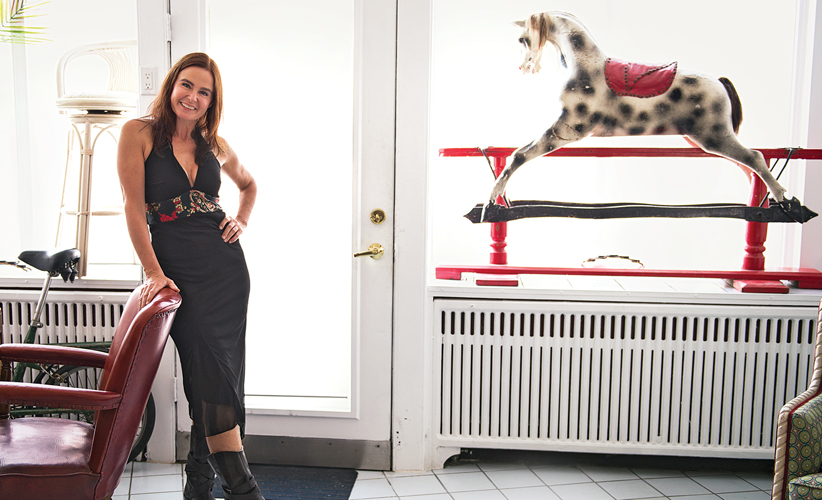
 A small slice of Europe on this side of the big pond, Montreal has been dubbed Canada’s sexiest city. With a jam-packed festival season that includes the highly rated Just For Laughs comedy festival and the Festival International de Jazz, along with an array of local boutiques, restaurants and bistros, Montreal offers something for everyone—as long as you can find a job. While the national unemployment rate hovers at around 7%, Montreal’s unemployment rate sits at 8.2%. Still, the city saw a 4% rise in its population from 2011 to 2012 and announcements of inner-city rejuvenation—including the new McGill University Health Centre—are helping bolster property prices. Real estate is still cheap compared with other major Canadian cities—the average price of a home on Montreal Island is $481,386, and if you broaden the boundaries and look at the Greater Montreal Area, including the North and South Shores, the average home price is $324,595. “It’s comparatively cheaper than say Toronto or Vancouver, but we also battle to attract jobs,” explains Jeffrey Baker, a realtor with Royal LePage Dynastie.
The best real estate opportunities right now are on the island itself. First on our list is the Rosemont/La Petite Patrie area, known locally as Little Italy. “This area is very, very hot,” says Baker. A big reason is that the neighbourhood is on the northern border of the Le Plateau/Mont-Royal area—a vibrant, popular and expensive place located near downtown. “Rosemont/La Petite Patrie isn’t a Plateau want-to-be,” says Baker. “It has its own distinct character. But many people who start out renting in Plateau end up buying here.”
In fact, this is what Matthew Taylor, 50, and his 40-year-old Rosa De Leon did earlier this year. “We bought in mid-December after living and renting for 20 years in Plateau-Mont-Royal,” says Taylor, a CEGEP teacher at Dawson College. While the couple originally wanted to purchase in Plateau, they found they were priced out of the market. “Everything we looked at within our budget was far too small for a family of four,” says Taylor. That’s when the couple started looking at other neighbourhoods, eventually settling on a duplex in La Petite Patrie. “We really love checking out the local restaurants,” says Taylor.
They aren’t the only ones. In the last three years, as the neighbourhood has become popular with buyers, prices have zoomed up 23%. “This is a high density area with lots of picturesque homes,” Baker says. In recent years many older textile buildings were converted into lofts, explains Amy Assaad, a Royal LePage Heritage realtor. This provided great first-time buyer opportunities, while helping to gentrify the neighbourhood.
If the average property price of $468,000 is a bit daunting, consider our next top neighbourhood of Villeray/Saint Michel/Parc-Extension. Directly to the north, this large area has a population of 142,000 residents. The main draw is the neighbourhood’s affordability. Average property prices are more than $100,000 cheaper than neighbouring communities and the area is experiencing dramatic growth. “Lots of condo conversions are taking place in this community,” Assaad says. David Schneider, a Sutton Group Immobilia realtor and history-buff, explains that historically the neighbourhood has been one of the poorest urban communities in Canada. “Cheap rents meant students have been living here for decades. This, in turn, has made the area cool.”
The third neighbourhood in our Montreal ranking was South-West (also known as Sud-Ouest). Homes in this area are 11% cheaper than the average Montreal Island home, but area prices have appreciated 40% in the last three years. “I’ve been buzzing about this neighbourhood for the last five years,” says Schneider. “Property values here are undervalued.” It’s an opinion shared by Nikki Tsantrizos, 29, and her partner, Steve Lavigne, 34. Two years ago, the couple started looking in the St. Henri district of South-West for a place to buy. “We’d rented in the area for 10 years and despite being a rough area, just loved it.” That was two years ago. Now, a full reno later, the value of their home has risen 40%. “When we bought there were strip clubs, hotdog stands and poutine shops,” says Tsantrizos. “Now these have been replaced by trendy cafes and boutiques.” But despite being close to downtown, the canal and the Atwater Market, this area’s reputation has been marred by social housing projects. Even so, recent developments are starting to put the community on the map. For instance, a high-tech hospital—slated to open in 2015—is prompting speculation on future home prices.
Two other neighbourhoods to consider are Verdun and LaSalle—both on the southern tip of the island. While Verdun is an older neighbourhood (originally settled by the Irish) it’s got a lot of potential. Despite a three-year appreciation of 22%, families may be leery of the area, given its high crime rate. Still, with its close proximity to the canal, downtown, the Métro (Montreal’s subway system) and Concordia University, it’s only a matter of time before the area experiences true gentrification. Homes in LaSalle are also rising, with an 11% increase in the last year alone. “Though it’s much more suburban than the other four neighbourhoods—and not as well-served by transit—it provides a less dense community that’s very family-oriented,” Schneider says. It’s also a place known for having some of the best shopping in the city.
A small slice of Europe on this side of the big pond, Montreal has been dubbed Canada’s sexiest city. With a jam-packed festival season that includes the highly rated Just For Laughs comedy festival and the Festival International de Jazz, along with an array of local boutiques, restaurants and bistros, Montreal offers something for everyone—as long as you can find a job. While the national unemployment rate hovers at around 7%, Montreal’s unemployment rate sits at 8.2%. Still, the city saw a 4% rise in its population from 2011 to 2012 and announcements of inner-city rejuvenation—including the new McGill University Health Centre—are helping bolster property prices. Real estate is still cheap compared with other major Canadian cities—the average price of a home on Montreal Island is $481,386, and if you broaden the boundaries and look at the Greater Montreal Area, including the North and South Shores, the average home price is $324,595. “It’s comparatively cheaper than say Toronto or Vancouver, but we also battle to attract jobs,” explains Jeffrey Baker, a realtor with Royal LePage Dynastie.
The best real estate opportunities right now are on the island itself. First on our list is the Rosemont/La Petite Patrie area, known locally as Little Italy. “This area is very, very hot,” says Baker. A big reason is that the neighbourhood is on the northern border of the Le Plateau/Mont-Royal area—a vibrant, popular and expensive place located near downtown. “Rosemont/La Petite Patrie isn’t a Plateau want-to-be,” says Baker. “It has its own distinct character. But many people who start out renting in Plateau end up buying here.”
In fact, this is what Matthew Taylor, 50, and his 40-year-old Rosa De Leon did earlier this year. “We bought in mid-December after living and renting for 20 years in Plateau-Mont-Royal,” says Taylor, a CEGEP teacher at Dawson College. While the couple originally wanted to purchase in Plateau, they found they were priced out of the market. “Everything we looked at within our budget was far too small for a family of four,” says Taylor. That’s when the couple started looking at other neighbourhoods, eventually settling on a duplex in La Petite Patrie. “We really love checking out the local restaurants,” says Taylor.
They aren’t the only ones. In the last three years, as the neighbourhood has become popular with buyers, prices have zoomed up 23%. “This is a high density area with lots of picturesque homes,” Baker says. In recent years many older textile buildings were converted into lofts, explains Amy Assaad, a Royal LePage Heritage realtor. This provided great first-time buyer opportunities, while helping to gentrify the neighbourhood.
If the average property price of $468,000 is a bit daunting, consider our next top neighbourhood of Villeray/Saint Michel/Parc-Extension. Directly to the north, this large area has a population of 142,000 residents. The main draw is the neighbourhood’s affordability. Average property prices are more than $100,000 cheaper than neighbouring communities and the area is experiencing dramatic growth. “Lots of condo conversions are taking place in this community,” Assaad says. David Schneider, a Sutton Group Immobilia realtor and history-buff, explains that historically the neighbourhood has been one of the poorest urban communities in Canada. “Cheap rents meant students have been living here for decades. This, in turn, has made the area cool.”
The third neighbourhood in our Montreal ranking was South-West (also known as Sud-Ouest). Homes in this area are 11% cheaper than the average Montreal Island home, but area prices have appreciated 40% in the last three years. “I’ve been buzzing about this neighbourhood for the last five years,” says Schneider. “Property values here are undervalued.” It’s an opinion shared by Nikki Tsantrizos, 29, and her partner, Steve Lavigne, 34. Two years ago, the couple started looking in the St. Henri district of South-West for a place to buy. “We’d rented in the area for 10 years and despite being a rough area, just loved it.” That was two years ago. Now, a full reno later, the value of their home has risen 40%. “When we bought there were strip clubs, hotdog stands and poutine shops,” says Tsantrizos. “Now these have been replaced by trendy cafes and boutiques.” But despite being close to downtown, the canal and the Atwater Market, this area’s reputation has been marred by social housing projects. Even so, recent developments are starting to put the community on the map. For instance, a high-tech hospital—slated to open in 2015—is prompting speculation on future home prices.
Two other neighbourhoods to consider are Verdun and LaSalle—both on the southern tip of the island. While Verdun is an older neighbourhood (originally settled by the Irish) it’s got a lot of potential. Despite a three-year appreciation of 22%, families may be leery of the area, given its high crime rate. Still, with its close proximity to the canal, downtown, the Métro (Montreal’s subway system) and Concordia University, it’s only a matter of time before the area experiences true gentrification. Homes in LaSalle are also rising, with an 11% increase in the last year alone. “Though it’s much more suburban than the other four neighbourhoods—and not as well-served by transit—it provides a less dense community that’s very family-oriented,” Schneider says. It’s also a place known for having some of the best shopping in the city.
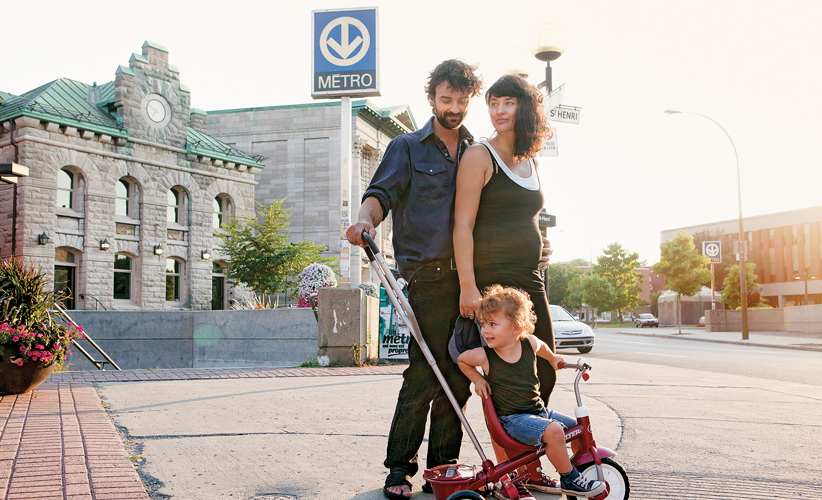
Share this article Share on Facebook Share on Twitter Share on Linkedin Share on Reddit Share on Email